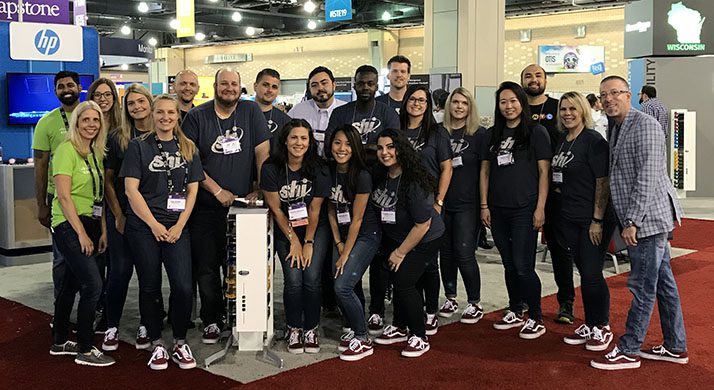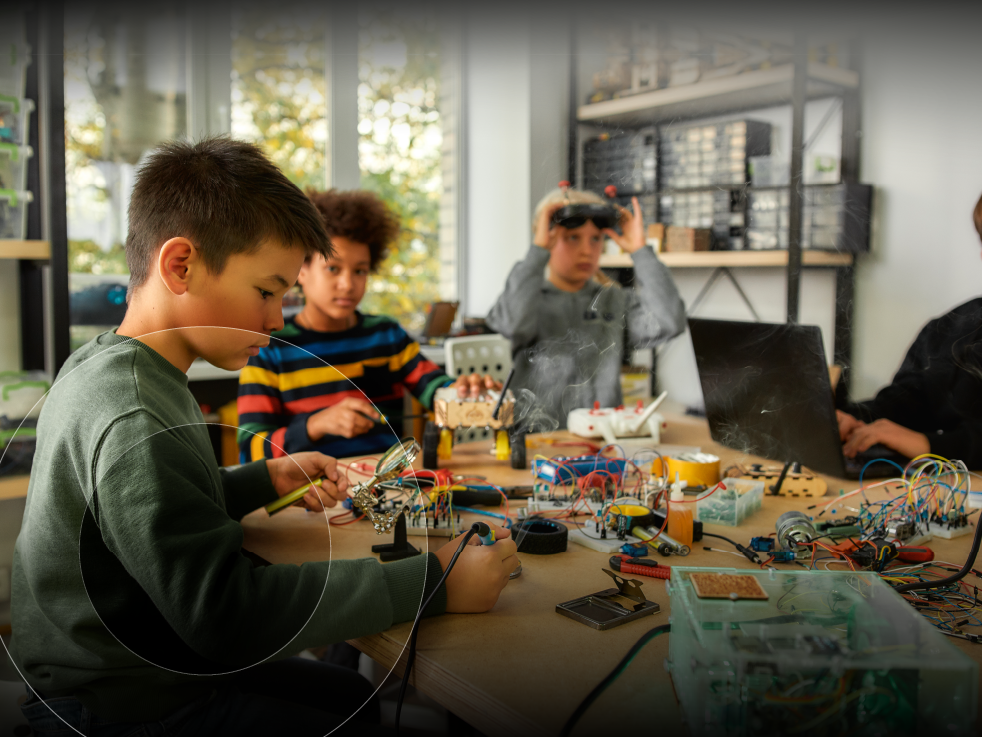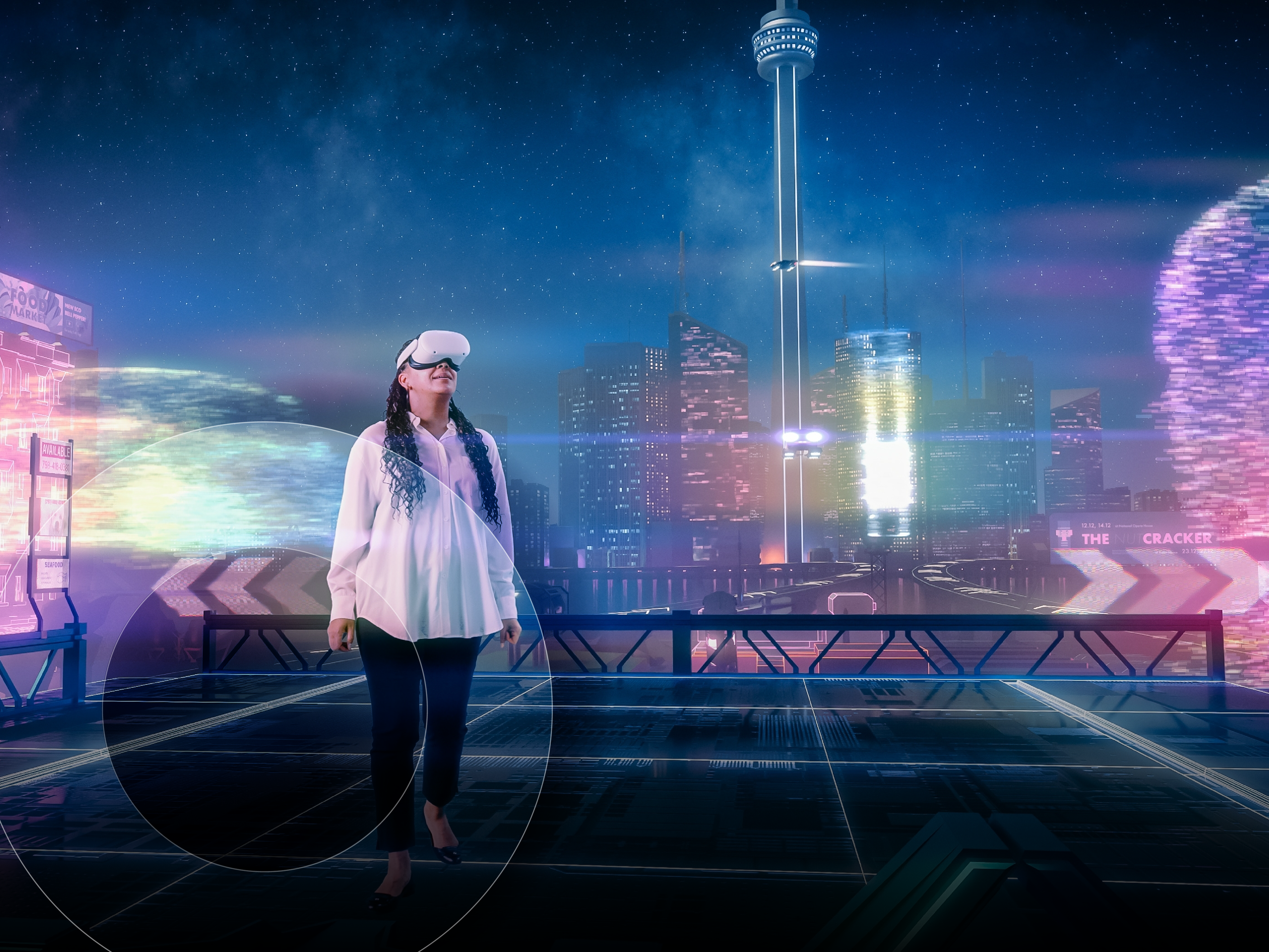VR and AR in the classroom: Empowering students through technology

If you grew up playing Oregon Trail in school, you may have been one of the first students to experience a virtual reality (VR) field trip in the classroom.
For today’s students, those VR field trips are a little more immersive.
At the 2019 International Society for Technology in Education (ISTE) Conference, VR and augmented reality (AR) were just one major trend. A continued focus on STEAM learning in the classroom and more engaging and empowering forms of learning, from storytelling to robotics to collaborative learning, also sparked new ideas for educators.
Here’s an update on how schools are using technology not only to instill a lifelong love of learning, but to give students educational experiences that propel them into the careers of the future.
Science, technology, engineering, art, and math
STEAM-driven technology is transforming the workplace. Time and distance are no longer barriers. The number of connected devices continues to grow — the latest estimate is 500 billion connected objects by 2030.
The use of digital tools has increased in 85% of jobs, and 4.3 million workers are likely to be displaced in the next decade by technology, not to mention the 2.2 million workers whose jobs will be disrupted. By 2027, the skills gap will include both technological and human skills.
Schools are working on bolstering their curricula to make sure students are prepared for this shifting work environment. Not only that, but educators are searching for fun ways to help students master STEAM topics from a young age. For example, kindergarten students can learn the basic principles of coding by playing with robots. There are numerous age-appropriate kits that let students line up color-coded tiles on a tablet to give the robots a sequence of instructions. Over time, students can unlock more advanced challenges.
In addition, more schools are investing in 1:1 initiatives and building out their networks to support more devices. These programs give students hands-on education with the technology that will be essential to their jobs and careers once they enter the workforce.
VR and AR give students the world in their classroom
While past generations had View-Masters and Oregon Trail as their window to other times and places, today’s students can have more immersive experiences.
VR headsets like Lenovo’s Mirage Solo can take students on virtual tours of national parks, monuments, museums, and cities around the globe. Students can walk the halls of a European museum from their classroom in Missouri. As Google and others continue to document cities through Street View, and even other planets and the Great Barrier Reef, VR field trips will only grow in popularity.
AR offers another opportunity. Most famous in gaming apps like Pokémon Go and Wizards Unite, AR technology that students use for fun also has powerful classroom applications. For example, students can virtually dissect an animal or see 3D renderings of different organ systems of the body.
Storytelling and other empowering education techniques
Creative storytelling gives students an outlet for their energy and passion, whether they’re creating a video version of a book report, building a website to chronicle a summer vacation, or crafting a slideshow about the American Revolution.
Adobe Spark for EDU recently added collaborative features that students can use to build storytelling projects, including videos, GIFs, music, websites, and more. Students can use tablets to share stories through animation, photography, drawings, and AR/VR.
Screencasting is also transforming the traditional classroom experience. When schools have 1:1 device programs, teachers don’t need a designated front of the classroom. They can project what they want students to see directly to each child’s device, with the ability to lock them on a certain screen.
This sets up classrooms for collaboration, with stations for robotics labs, 3D printing, and other technologies. Many districts just need to figure out how to strengthen their network infrastructure to allow for the influx of devices connected to the network.
Taking the next step for students
During Dell’s “Life is short, STEAM on” session, the presenters covered two philosophies around technology in the classroom: engagement vs empowerment.
When seeking to engage students, the teacher makes decisions and generates interest from students by presenting topics in compelling ways. When empowering students, however, teachers let students make the decisions, pursue their passions, and have a voice.
In the end, these technologies allow educators to do both.
If you’re interested in getting started with these technologies or other classroom devices, you can source them through SHI via our OMNIA Partners, Public Sector cooperative contract. To learn more, contact your SHI account executive.





